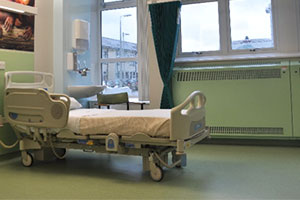How coloured radiator covers can be used in autism education environments
Colour psychology studies how hues can impact the human behaviour. This is vital in an autism specialist unit or school. This is due to senses normally being heightened and behaviours closely monitored by onlooking staff.
As well as supplying low surface temperature radiators, Contour also supply anti-ligature radiator covers which have numerous additional safety benefits. This can make an excellent choice for an autism unit.
Overloaded sensors
Both children and adults who have autism experience heightened senses. These include sight, sound, touch, smell, sunlight and even colour has been found to create a variety of effects on people with autism.
An example of this would be that smells are much stronger, sounds are louder, lights are more glaring and colours seem more colourful.
This demonstrates how radiator covers can contribute to a surrounding environment as when focusing on interior design, walls are normally the priority. However to meet regulations and lower risks, radiators need to be protected.
Radiator covers can be a part of the interior design, for example if you have a colourful wall, you could have colourful radiator covers to match. As opposed to standard white radiator covers which would take away the impact of the coloured wall and loose the continuous flow. 
Which colours are best for autistic children?
Although children with autism can tolerate varying levels of colour, sound and patterns, no two children are the same. The level of their autism will also vary over a broad spectrum.
However, there are some colours that have been found to better suit children with autism, for example toned down colours as opposed to bright, garish colours.
Bright colours and autism is a very well researched topic. Studies show that colours show a lot more vibrant to children with autism. This is because the components of the eye vary due to chemical imbalances or neural deficiencies.
The National Autistic Society suggest avoiding bright colours or busy patterns. This is due to them increasing anxiety or even cause people to become fixated.
Past projects have seen the use of a pale green used in a children’s hospital ward. Child psychologist, Lynne Harrison, suggests that soft green is one of the best colours to use in environments of autistic children.
To conclude
Low-surface temperature and anti-ligature radiator guards are predominantly installed to provide physical protection. However as mental health awareness continues to grow, colour should be considered in more public and educational environments.
Contour are experienced in supporting specifiers with their projects, including SEN schools, nurseries, children wards and more.
To find out more about colour psychology, view Contour’s guide.
